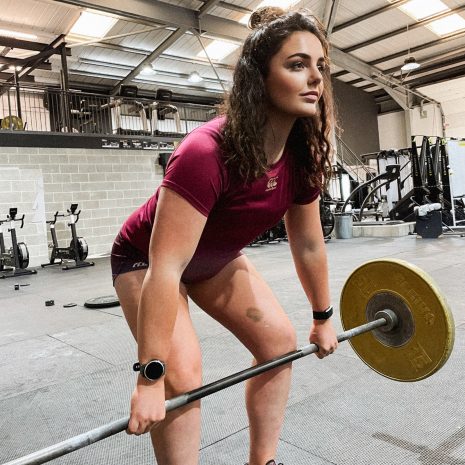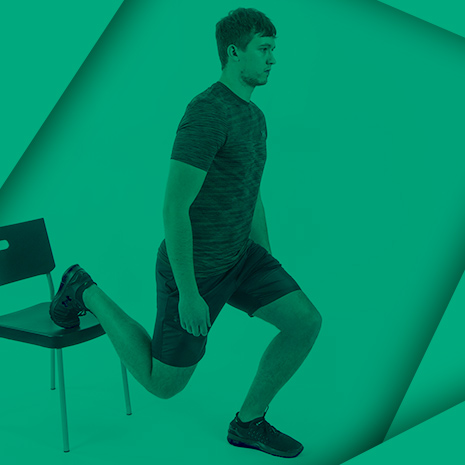We have teamed up with esteemed Chartered Physiotherapist, Neil Aitken to give you high-quality information on the most common Rugby injuries and how to best recover from them. If there’s a particular injury you’d like us to cover with Neil’s help, get in touch with us on social media (Facebook | Twitter).
What Is My Rotator Cuff?
The rotator cuff is a group of four muscles that originate from your scapula (shoulder blade) and form a cuff around the ball of the humerus (upper arm bone). Your shoulder is a ball and socket joint and is designed to have large of amounts of movement but this results in decreased stability of the joint. A major function of the rotator cuff is to help to provide stability for the shoulder.
The four muscles are called supraspinatus, infraspinatus, subscapularis and teres minor.

How Do I Know If I Have A Rotator Cuff Injury?
Shoulder pain will be felt from the tip of the shoulder to the elbow – this is due to its nerve supply. The first thing to consider is whether your pain started gradually, or whether was it from a specific incident during a match/training. If it was the latter, and you are struggling to lift your arm due to pain and/or weakness, then you should seek medical assistance via a physio or a doctor.
There are several different types of injury for the rotator cuff, including:
- Tendinopathy
- Shoulder impingement syndrome
- Rotator cuff tears (these can be small or large)
- Calcific tendonitis
1. Tendinopathy
Tendinopathy of the rotator cuff is usually a consequence of impingement. As with Achilles injuries, it is important to treat tendinopathy by loading the tissue with specific rehabilitation exercises. The reasons for any impingement would also need to be rectified, as mentioned above.
2. Shoulder impingement syndrome
The most common rotator cuff injuries have a gradual onset and involve shoulder impingement. The tip of the shoulder blade sits above the ball and socket part of the shoulder joint. If the ball rides upwards and sits slightly high, the structures that lie in this space can be ‘impinged’. The rotator cuff tendons are one of these structures. As you lift your arm, this space is narrowed most at 90 degrees and then once your arm is overhead, the space gets larger again. So an ‘arc of pain’ from roughly 70 – 120 degrees when you lift your arm is a common sign of shoulder impingement. Why this happens is multi-faceted and needs to be assessed. Common reasons are tightness in the posterior capsule of the shoulder joint, weakness of the rotator cuff or poor scapular control. A physio will determine which of these is the case for your shoulder impingement, and be able to show you the exercises to resolve the issue.
3. Rotator cuff tears
A rotator cuff tear will mean that it is difficult to lift your arm up to shoulder level. There are several other reasons why this may be the case such as a collarbone injury, but it needs to be assessed. A small cuff tear can be resolved with rehabilitation, whilst a larger tear may require surgery.
4. Calcific tendonitis
Calcific tendonitis is the formation of small bony deposits within the rotator cuff tendon. The reason for this happening is unclear, but it usually happens with patients of 40-50 years of age and is most common in females. With time, the body reabsorbs the bony deposits and the pain resolves. Full shoulder function should be regained.
How To Treat A Rotator Cuff Injury
The shoulder joint is the most complex in the body and, as such, treatment can be very varied depending on the person and the specific injury. The arm is only attached to the rest of the skeleton via the collarbone attaching to the sternum (breastbone). As such, the muscles of the shoulder provide a major role in how it functions. Any tightness or weakness needs to be resolved and this forms the major part of any shoulder injury rehabilitation. This focuses on rotator cuff strengthening and scapular strengthening and control. This only differs if surgery is required. So when is this the case?

Rotator cuff tears are unusual in rugby players, as they generally occur due to recurrent micro-trauma, and therefore generally present themselves in older patients. However, a sudden large force or a shoulder dislocation can result in a rotator cuff tear. Any cuff tear will mean that there is a weak feeling when trying to lift your arm. If you have a larger tear, you will not be able to lift it at all. This clearly requires medical assessment and possible surgery. Rehabilitation following surgery can take 6-12 months.
About the author
Neil Aitken is a Chartered Physiotherapist with a private clinic in Edinburgh. He has previous experience as a senior physiotherapist in the NHS and provided physio for one of the top amateur rugby teams in Scotland. He is highly evidence-based having completed a Post Grad in Musculoskeletal Physiotherapy gaining membership to the MACP, one of the most highly respected qualifications within physiotherapy.
Website: http://www.neilaitkenphysio.co.uk/
Facebook: https://www.facebook.com/neilaitkenphysio/
Twitter: @aitkenphysio

Please note, this article is intended to serve as a guide for general information only. Injuries should be assessed by a qualified specialist such as a physiotherapist or doctor. When you sustain an injury, there are always complicating factors that may need to be assessed and addressed by a professional.




Comments